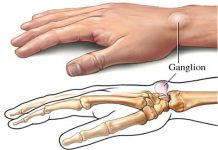 Biopsy: During the staging process, physical examination findings, laboratory tests and radiological diagnosis methods are used. Besides, a sample taken from the tissue is examined under microscope. This is called BIOPSY. The studies show that THE MOST IMPORTANT CONTROLLABLE FACTOR DETERMINING THE PROGNOSIS (SURVIVAL) IN THE MUSCLE SKELETON SYSTEM TUMORS IS THE DULY PERFORMED BIPOSY.
Biopsy: During the staging process, physical examination findings, laboratory tests and radiological diagnosis methods are used. Besides, a sample taken from the tissue is examined under microscope. This is called BIOPSY. The studies show that THE MOST IMPORTANT CONTROLLABLE FACTOR DETERMINING THE PROGNOSIS (SURVIVAL) IN THE MUSCLE SKELETON SYSTEM TUMORS IS THE DULY PERFORMED BIPOSY.
Unduly performed biopsy may cause to the loss (cut) of the limb due to contamination or even more importantly, to the decrease of the survival possibility of the patient. Another significant point is about where and by whom the treatment shall be continued after the staging after biopsy.
The general rule in the sarcoma of the muscle skeleton system is that the biopsy should be performed by the person who can make the surgical treatment in a duly way. It is not an appropriate way to transfer the patient to another Center or surgeon according to the result of the biopsy. It i also important that the surgeon performing the operation should preferably have the sources to organize the additional treatment methods as chemotherapy or radiotherapy if required.
The biopsy can be made with needle (injector) and similar instruments either by without incising the skin (Laparoscopic way) or incising the skin and taking a sample from the mass (open way). Even if the decision is made by your doctor, he shall explain the reasons to you and get your approval.
Laparoscopic biopsy can be made by your surgeon or an experienced radiologist with an injector or similar special instruments. This method has some advantages as avoiding the operating theater procedures, being less painful, the opportunity to be performed under local anesthesia and lower possibility of contamination of the tumor tissue to the adjacent tissues. Laparoscopic biopsy is considered as more reliable in the detection of the pathologies like abscess, hematoma (congestion in the tissues) or cyst; in metastasis (the spread of a cancer from one organ to the bone or soft tissue) or in the recurrence of the tumor previously existing on the same area and surgically taken out.
The most important disadvantage of the Laparoscopic biopsy is the possibility of not making a diagnosis or misdiagnosis as a result of not having enough tissues. It might be difficult to establish final diagnosis by Laparoscopic biopsy especially in the cartilaginous tissue tumors. There is a limited number of studies about the Laparoscopic biopsy of hand tumors. While the accuracy rate of the results after the Laparoscopic biopsy of the soft tissue tumors is between 90-96%, this rate is lower in bone tumors. It is observed that the tissue taken is not sufficient in approximately 30% of the patients. A study performed about osteosarcoma shows us that the verification of the diagnosis with Laparoscopic biopsy could be successful only in 80% of the patients.
As general information; the standard approach in the bone and soft tissue tumors seen in hand, wrist and arm is to perform open biopsy (see table 4).
It is possible to establish the correct diagnosis in 96% of the patients. Besides, the tissue sample taken can be sufficient to perform histopathological, immunochemical and cytological examinations. This additional data of the tumor tissue is highly important during the treatment. The known disadvantages are, on the other hand, the possibility to apply anesthesia and that it is a surgical intervention performed under operating theater conditions and has a higher risk of contamination of the tumor tissue to the adjacent tissues.












